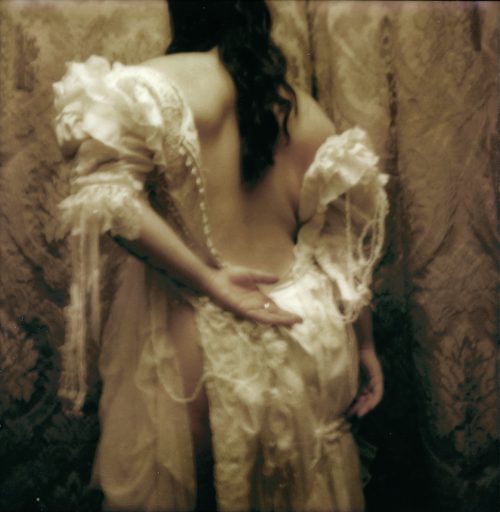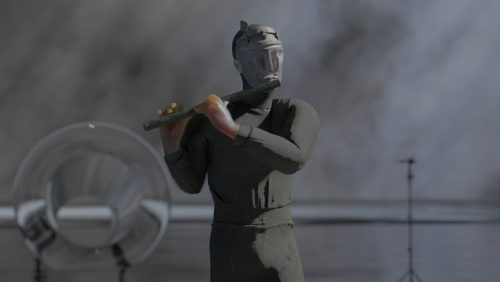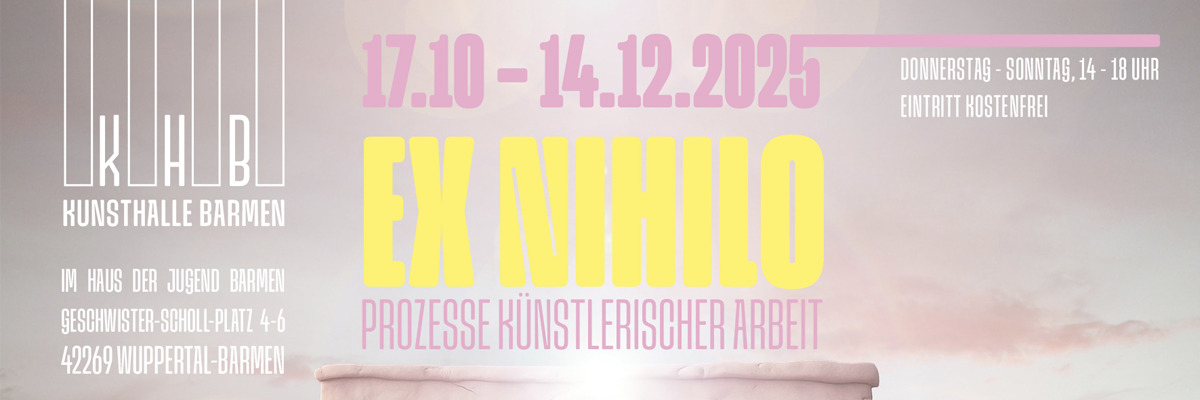
Group Show
Datura
Project Info
- 💙 100 North Prospect, Youngstown,Ohio
- 💚 Marie Ségolène C Brault
- 🖤 Group Show
- 💜 Marie Ségolène C Brault
- 💛 Cléo Sjölander
Share on
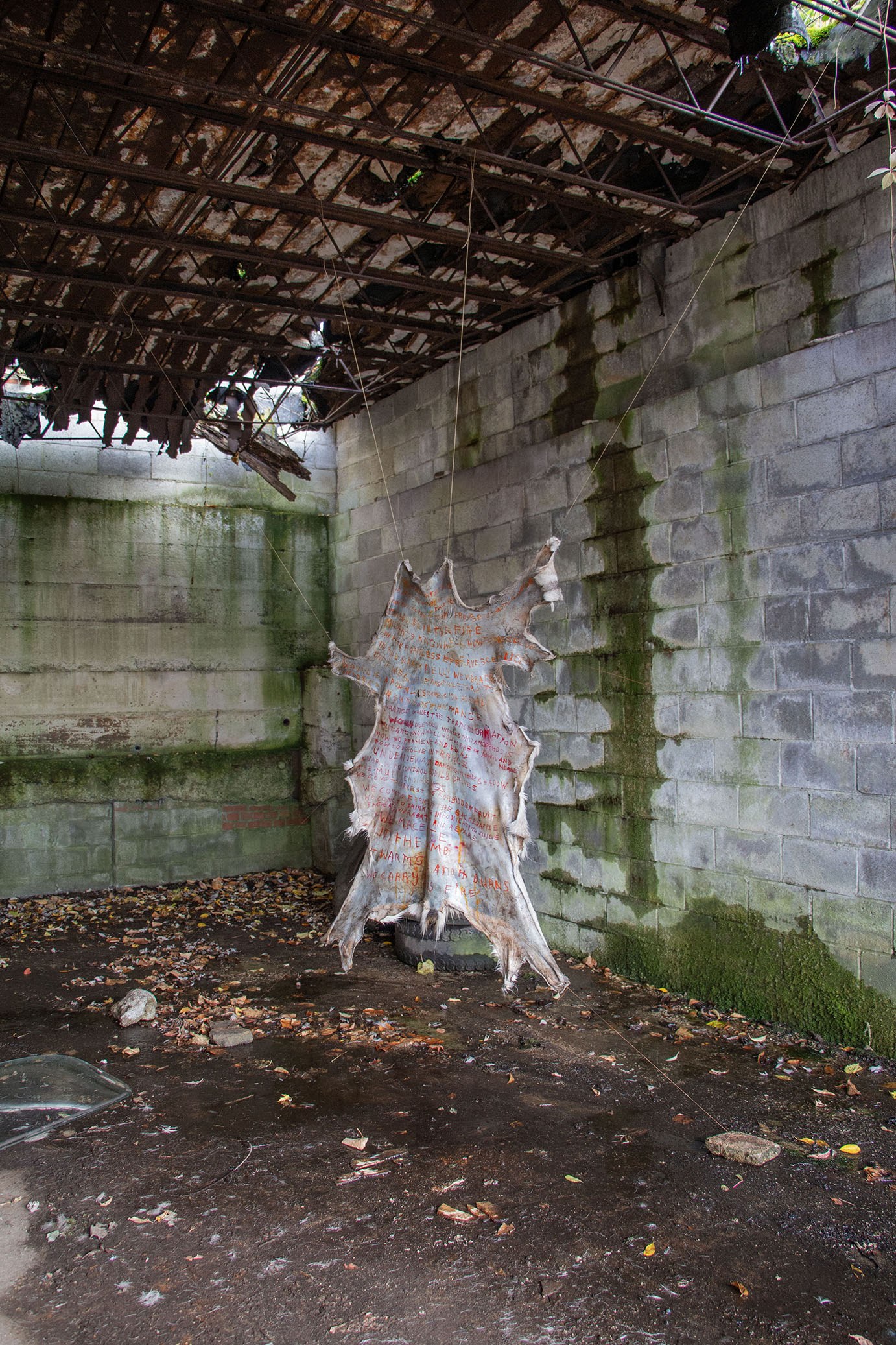
Éli del (Ariane Gagné), lullaby of the vineyard, 2023, tattoo ink on deer skin, 5,4 x 4 ft.
Advertisement
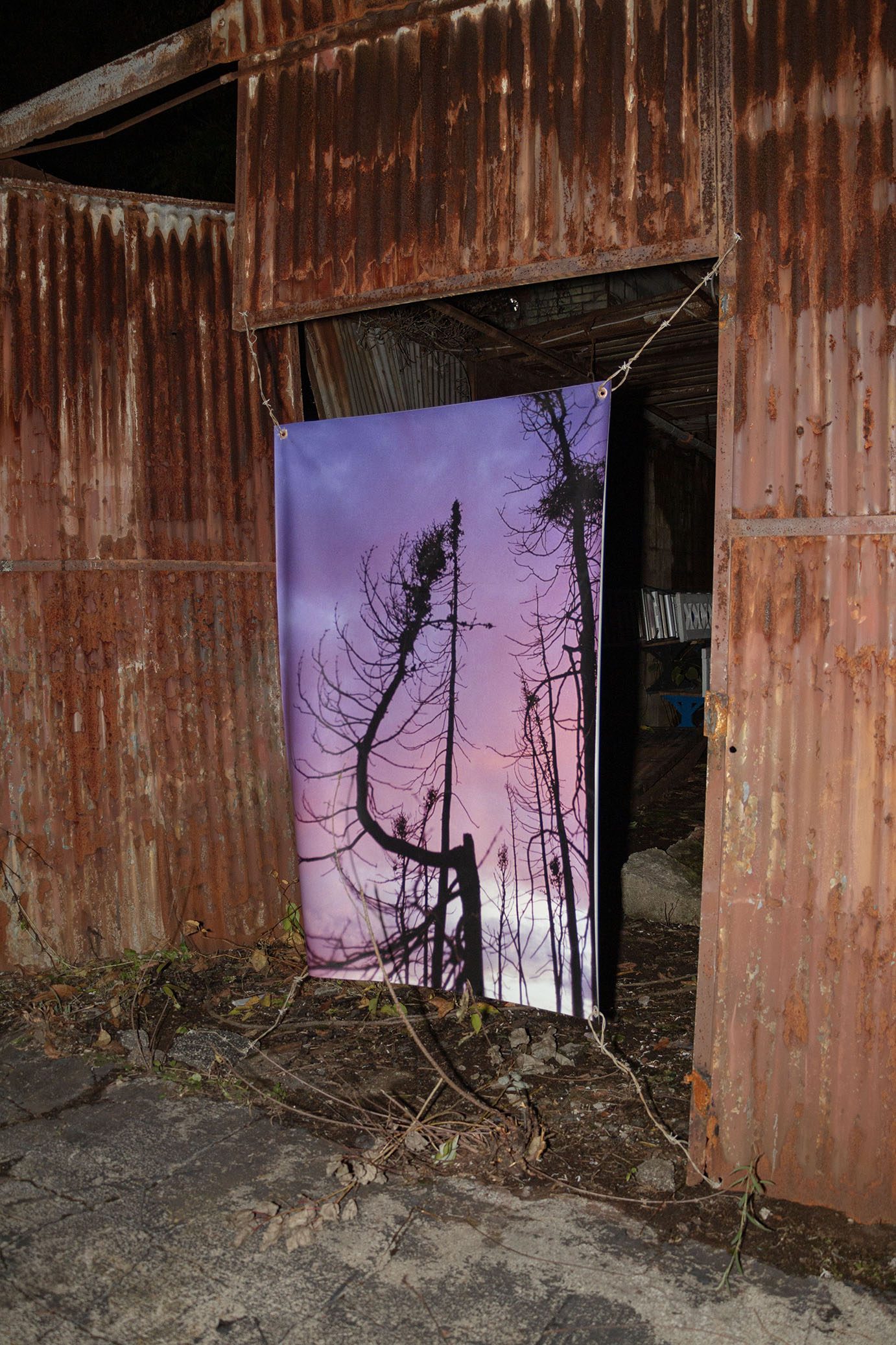
Justin Apperley, twisted again, 2023, Inkjet Print on Vinyl, Barbed Wire, 40x60 in
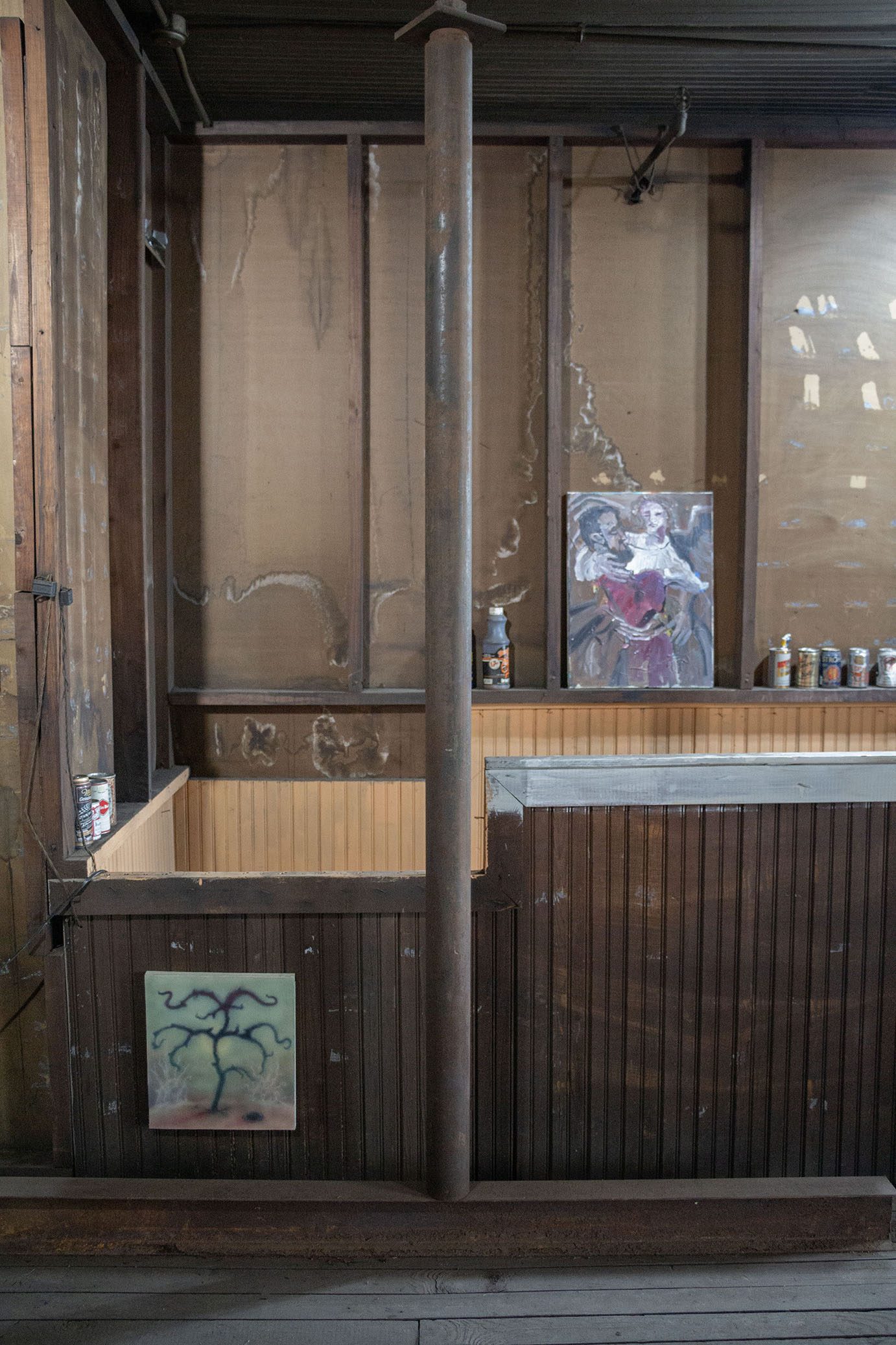
(Left) Julien Parant Marquis, Lapse Between Dawns, 2023, acrylic on canvas mounted on panel, 12.75 x 14 in (Right) Dylan Weaver, Jacob Wrestling the Angel, acrylic on canvas.
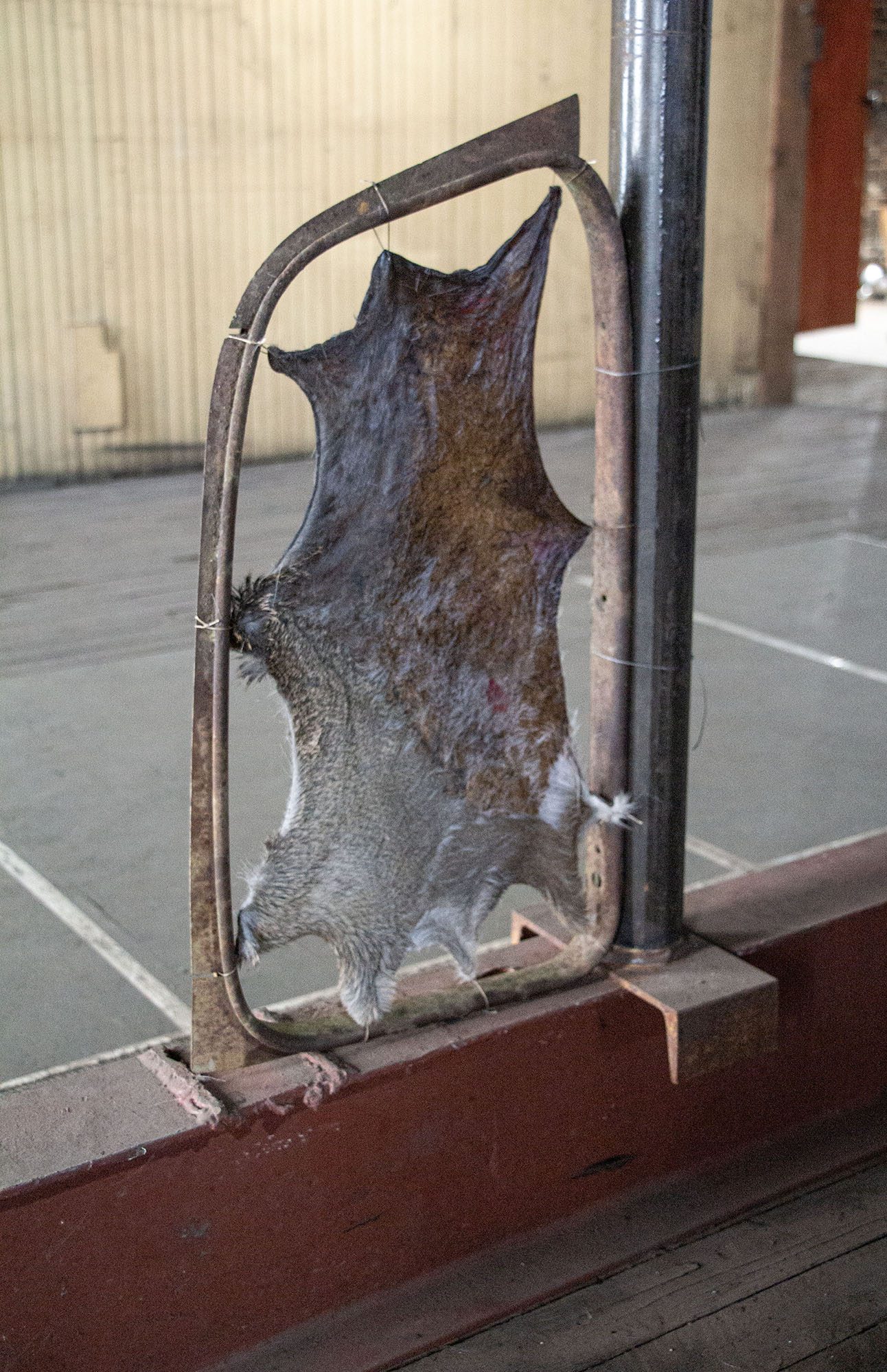
Éli del (Ariane Gagné), the event is an unexpected transformation, 2023, tattoo ink on deer skin tanned with wine, car window frame, 27 x 14,5 x 2 in
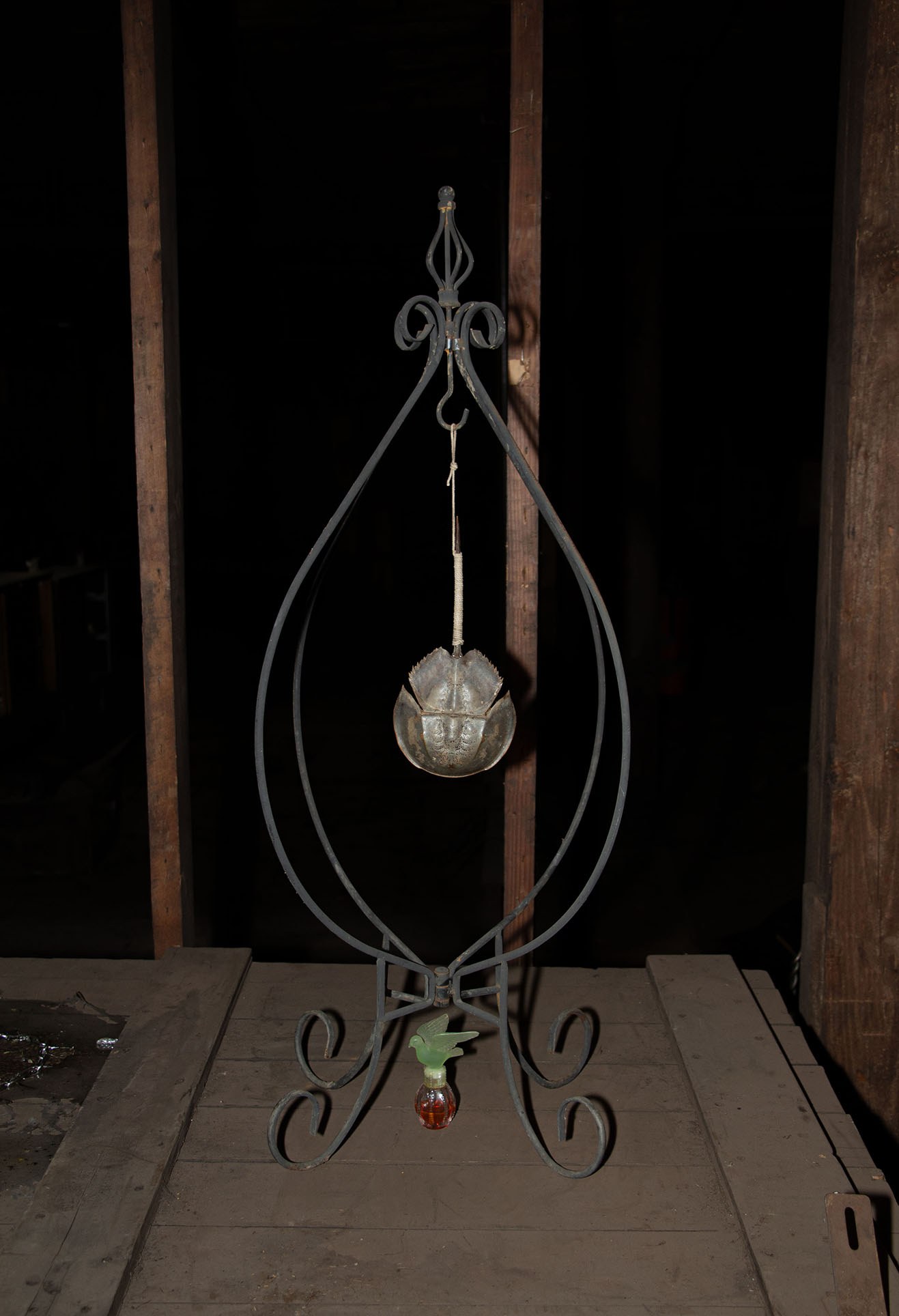
Cléo Sjölander, bleeding creature, 2023, horseshoe crab, cotton twine, antique perfume bottle, metal, 31x16x16in
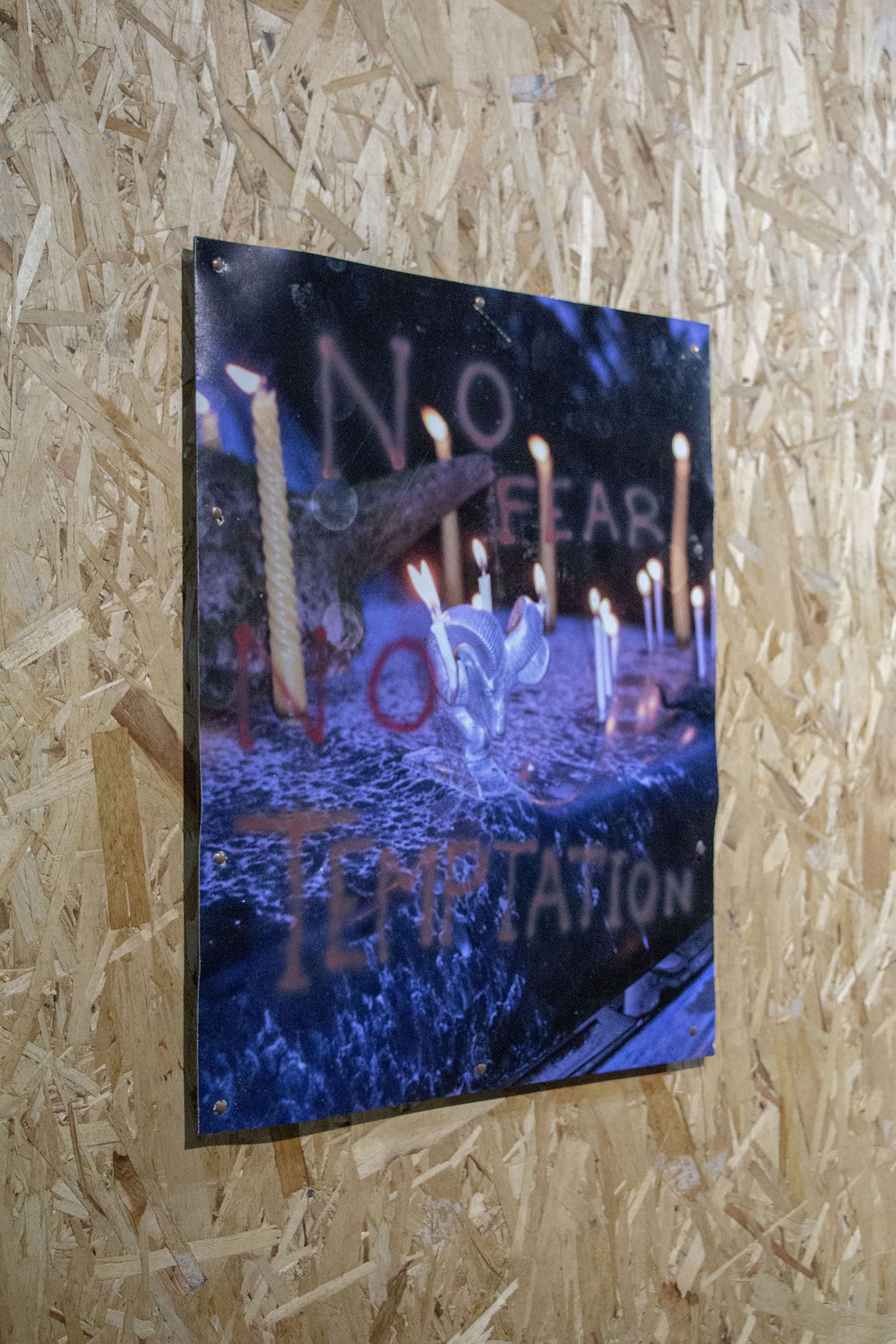
Justin Apperley & Julien Parant-Marquis, no fear no temptation, 2023, Acrylic, Inkjet Print on Steel, Copper Rivets, 18x22 in

Paul Burgess, An Open Enclosure, 2023 acrylic on wood panel, fabric,hay
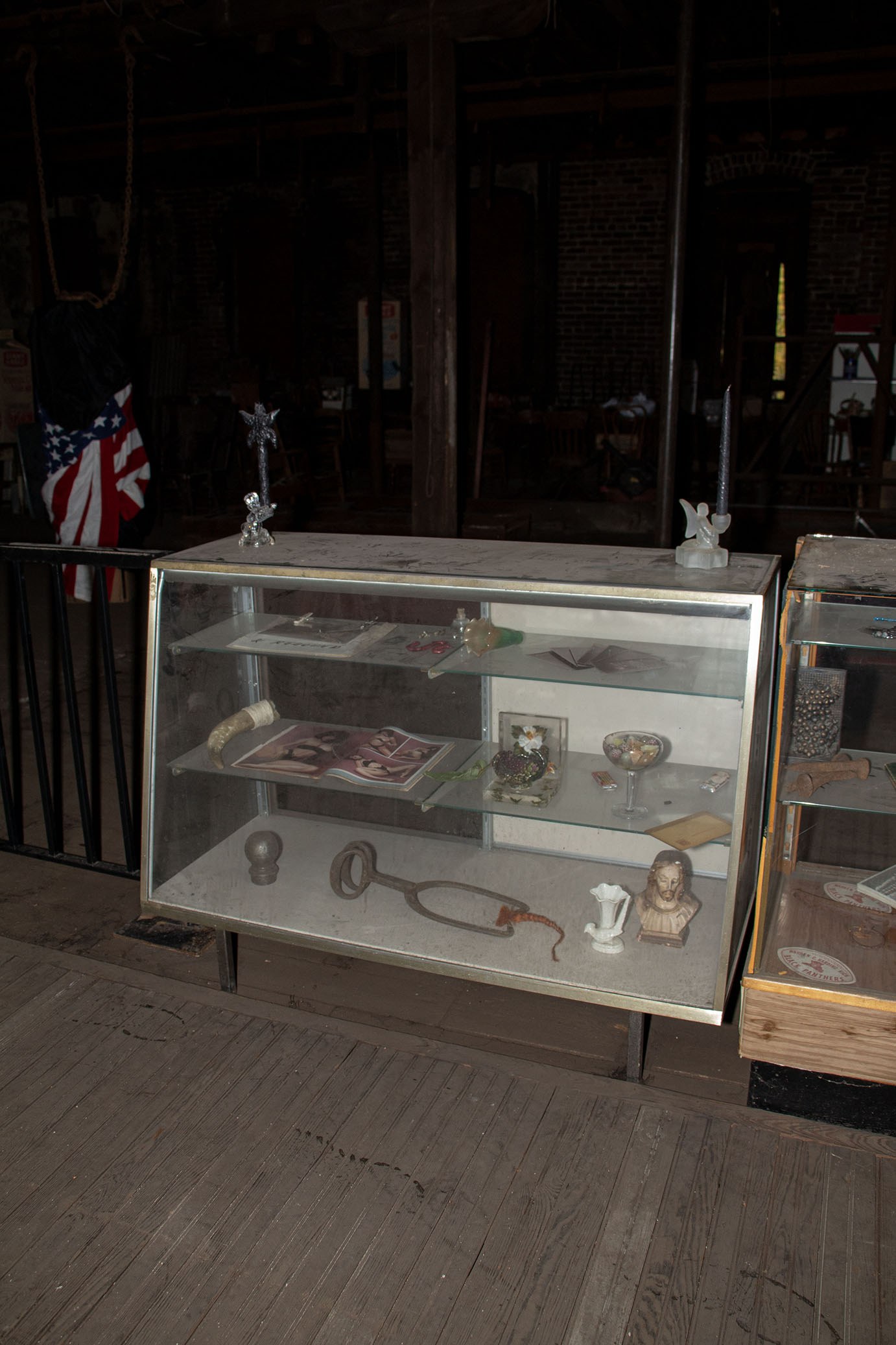
Installation View Cléo Sjölander & Alex Patrick Dyck, Cabinet of curiosities, 2023 Found objects, resin, Youngstown nails, vintage erotic magazine, horn, glass display case, 56 x 36 16 in
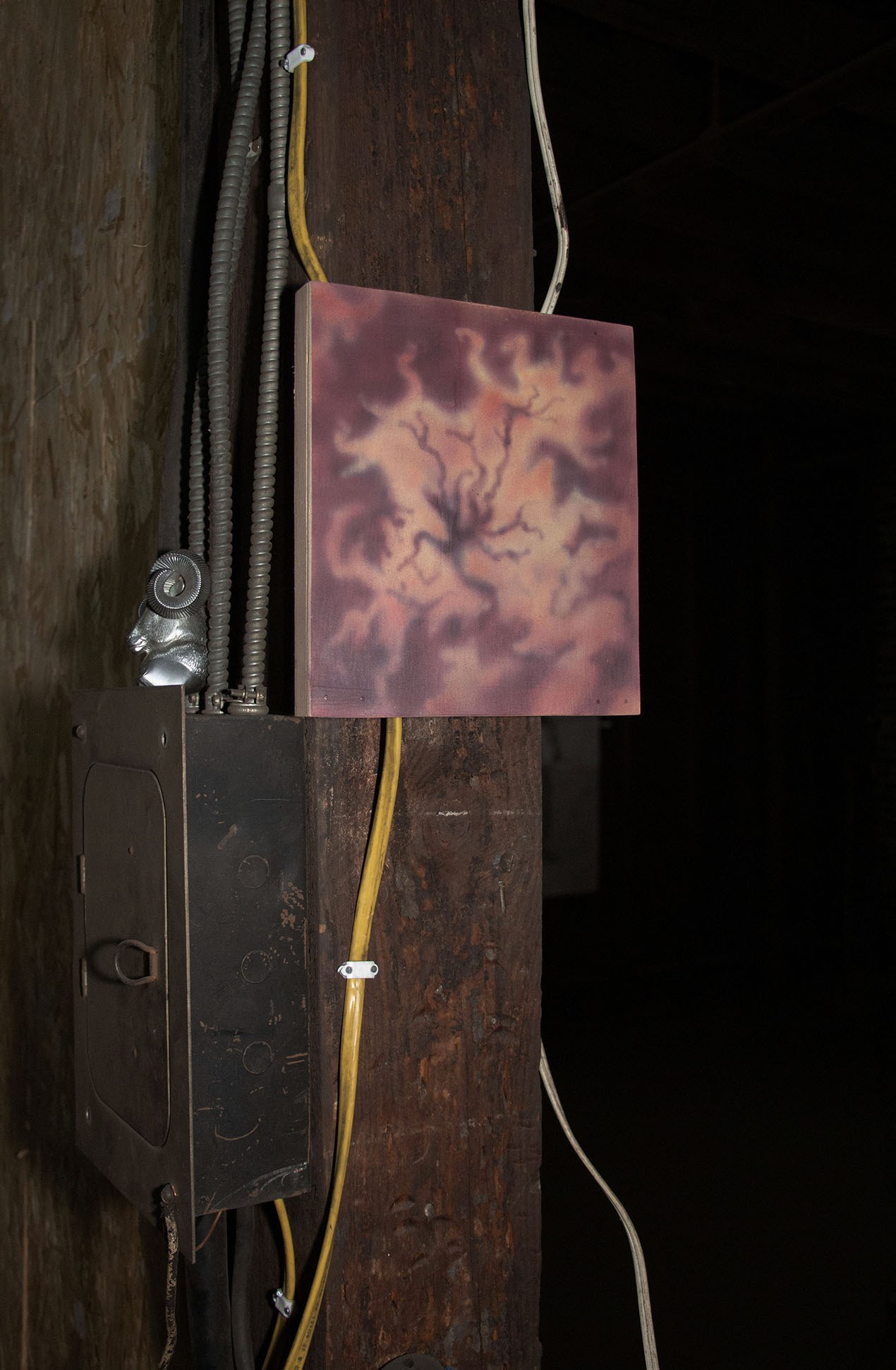
Julien Parant-Marquis, Tarp (part), 2023, acrylic on wood panel
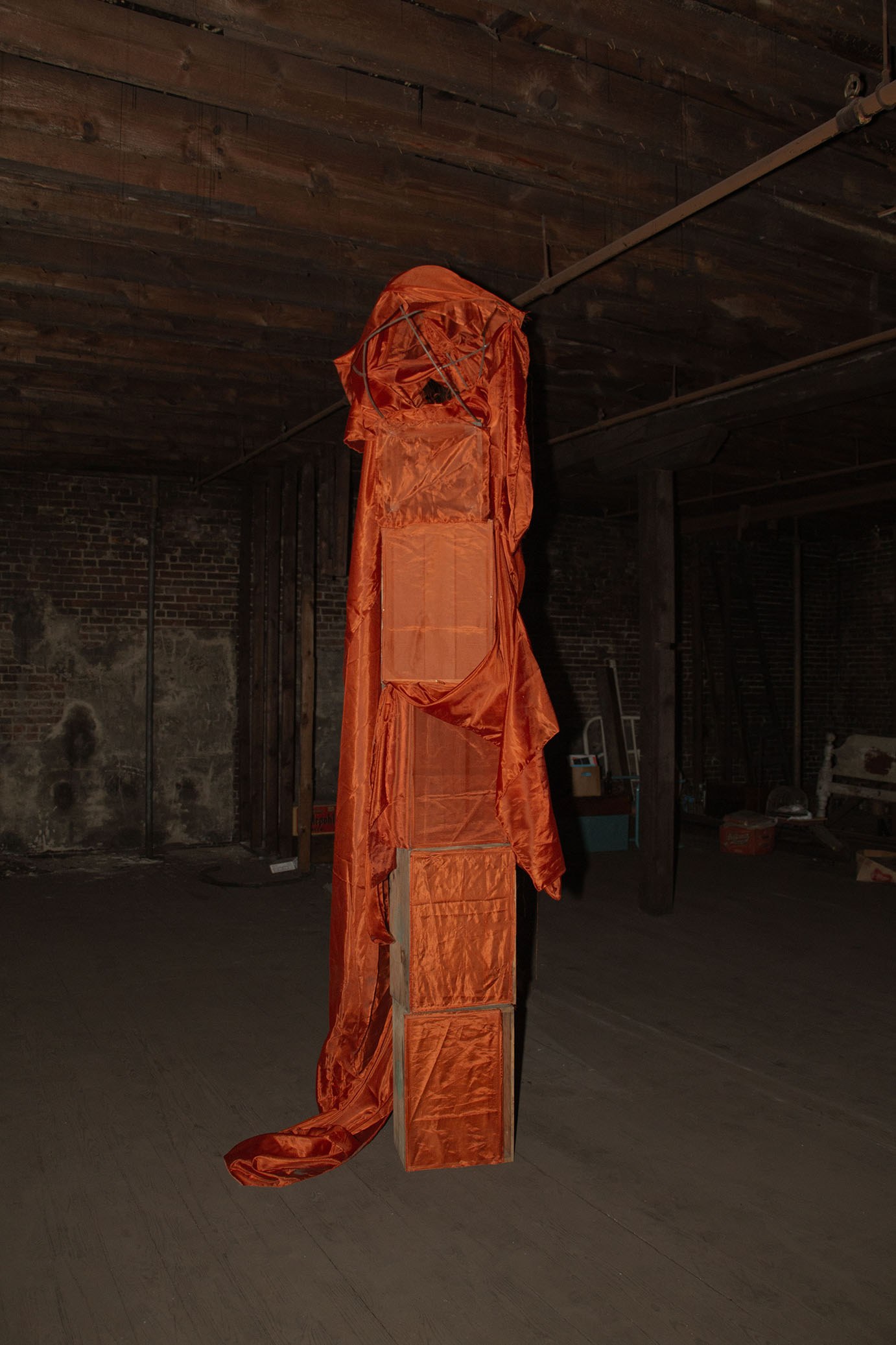
Tomm Roeschlein, untitled, 2023, Synthetic fabric, rusted steel circular frame, wood crates, pins.
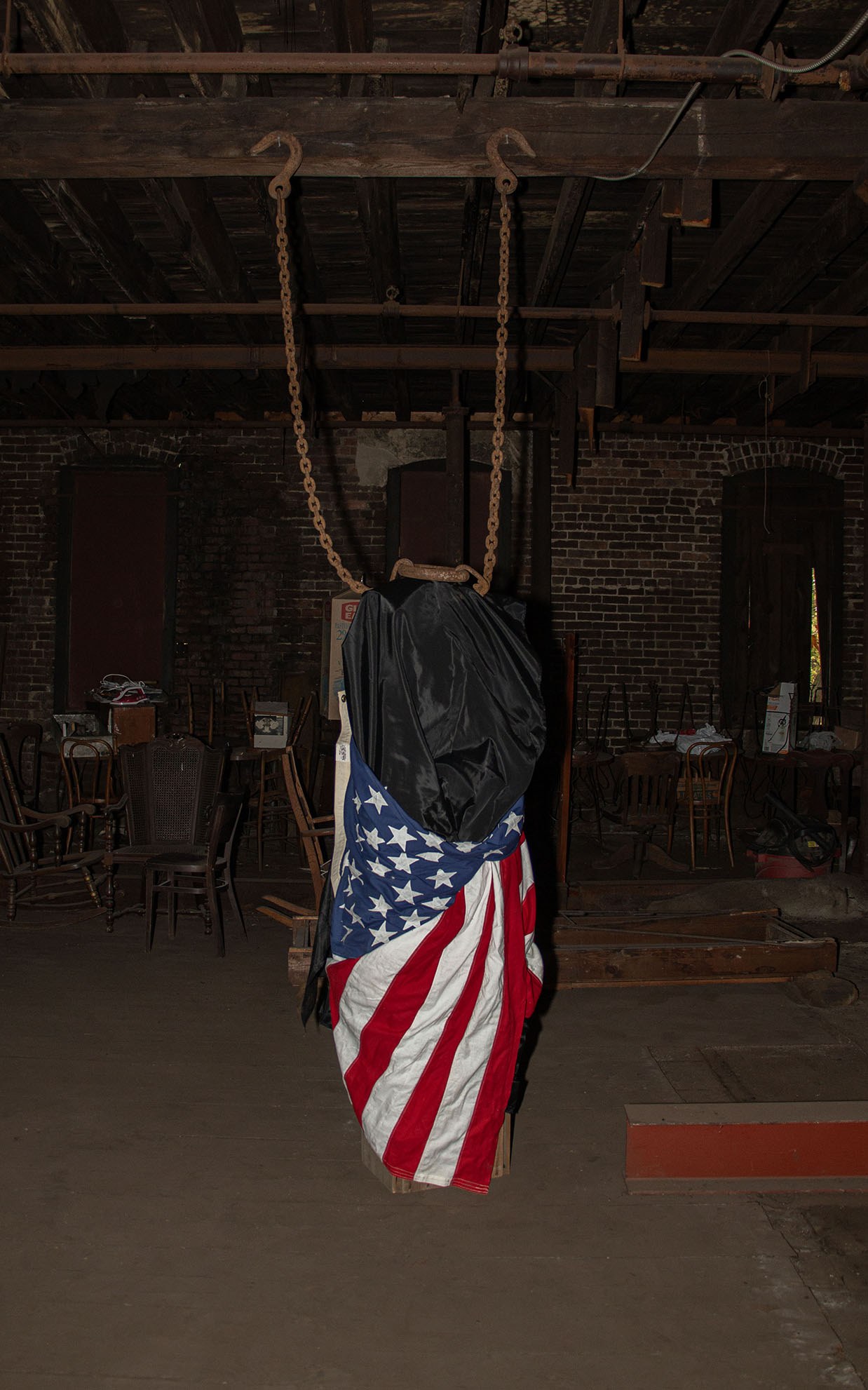
Tomm Roeschlein, untitled, 2023, flag, synthetic fabric, wood crates, rusty antique chain.
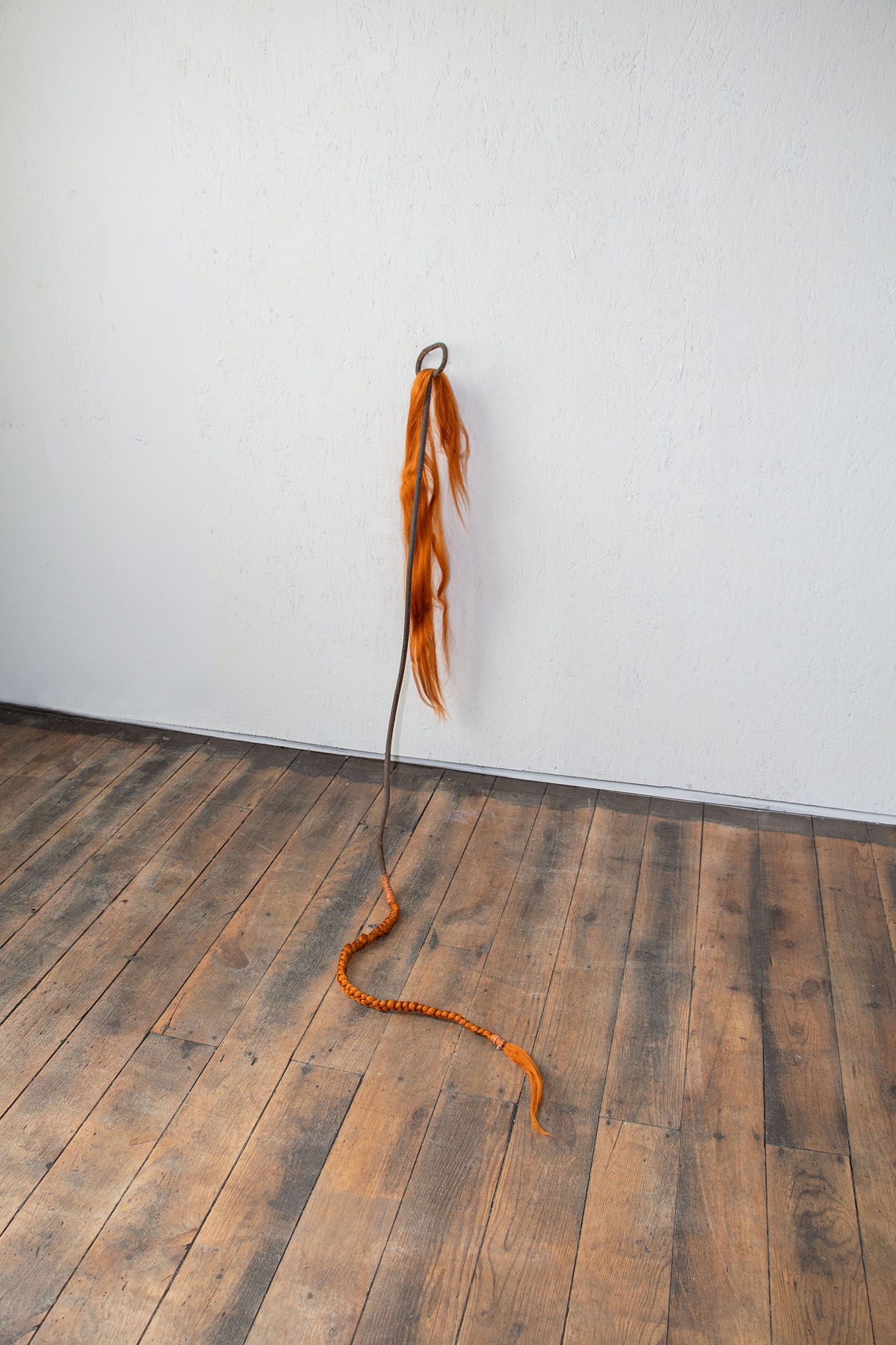
Cléo Sjölander, She can speak to snakes, 2023, synthetic hair, leather, rusty metal, 39x42x16in
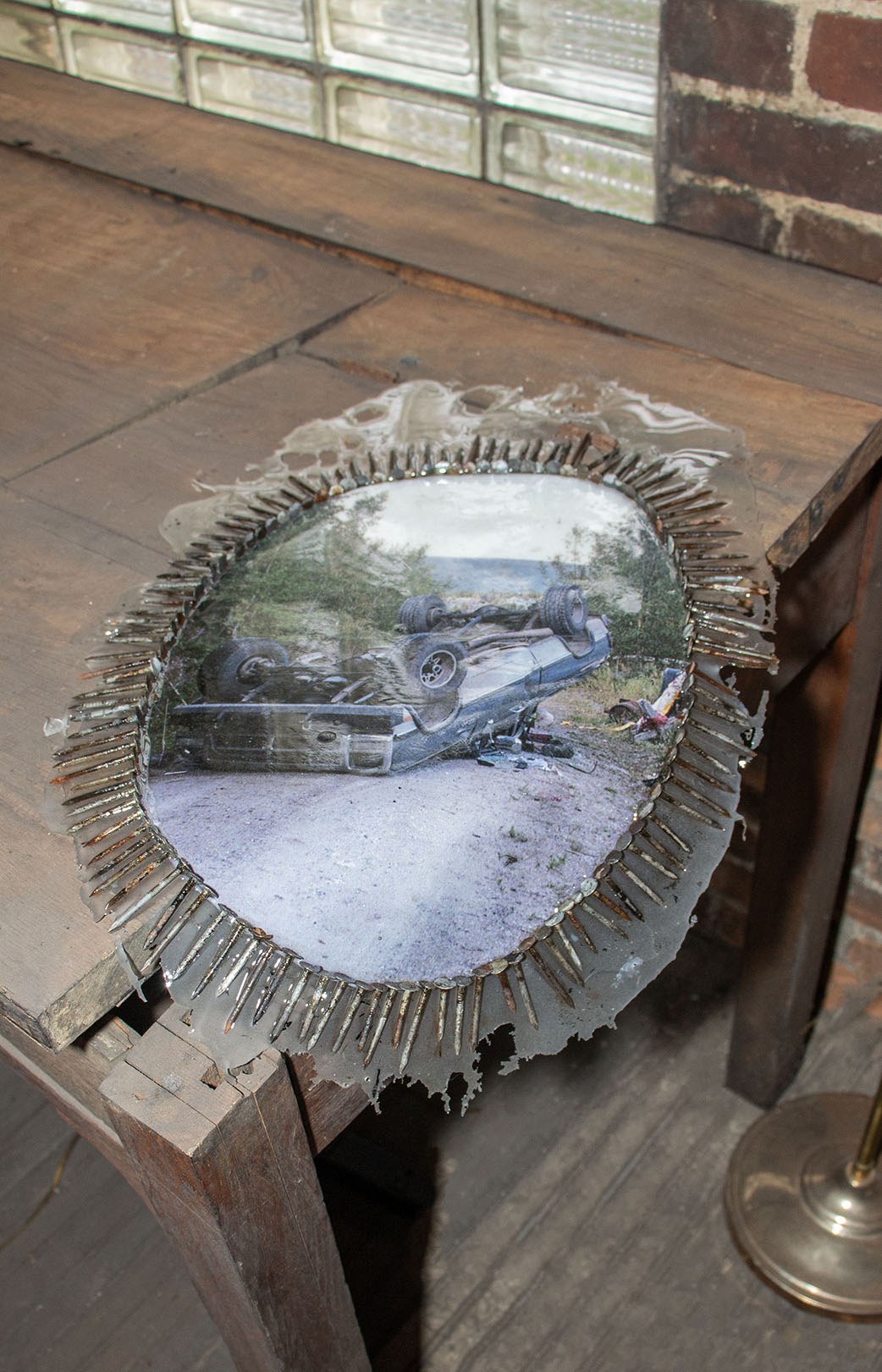
Justin Apperley & Alex Patrick Dyck, reckless in the north end , 2023, Inkjet Print, Rusted Youngstown Nails, Resin, 16x24 in
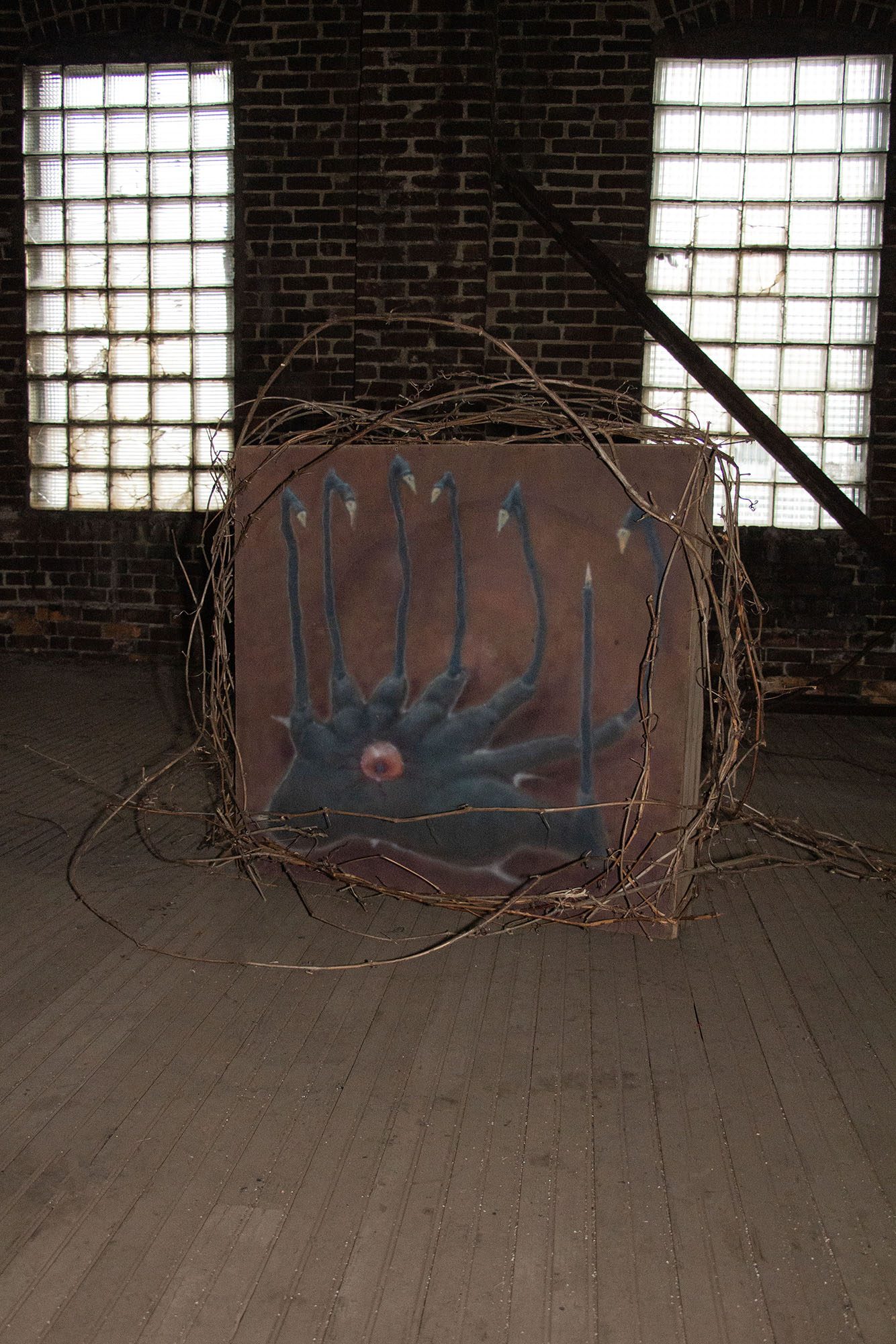
Julien Parant Marquis and Alex Patrick Dyck, Necrid’s Grip, 2023 Acrylic on masonite board, wood, vines, (Inside) resin, found objects, Youngstown nails, glass, hickory nuts, 35x37x6 in
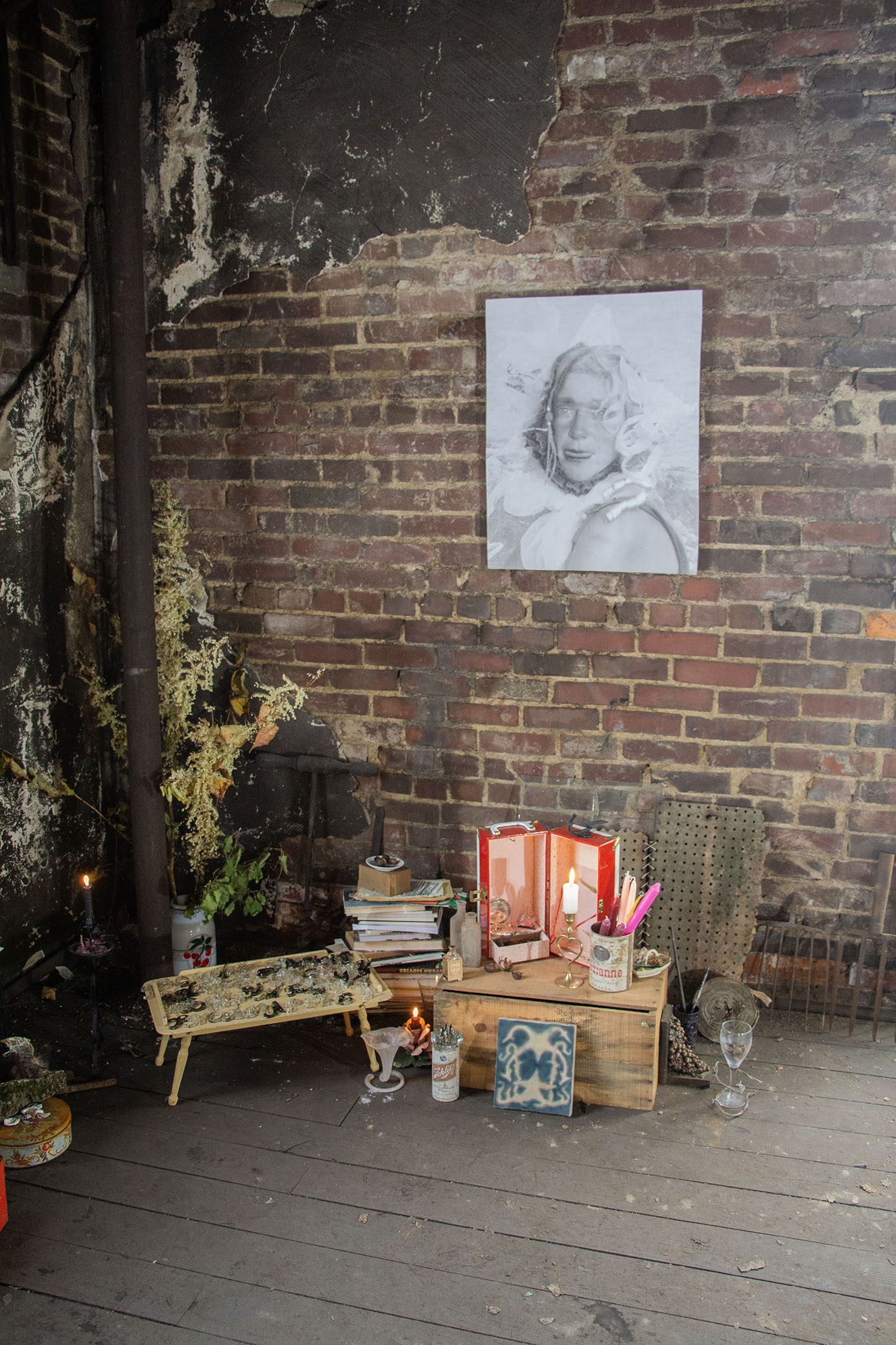
(floor) Alex Patrick Dyck, Haunted Dollhouse 2023, Resin, Japanese knotweed, datura(floor) Julien Parant-Marquis, untitled, 2023, acrylic on canvas on panel(wall) Justin Apperley, left me on the mississippi, 2023, Laser Print on Disused Road Signage
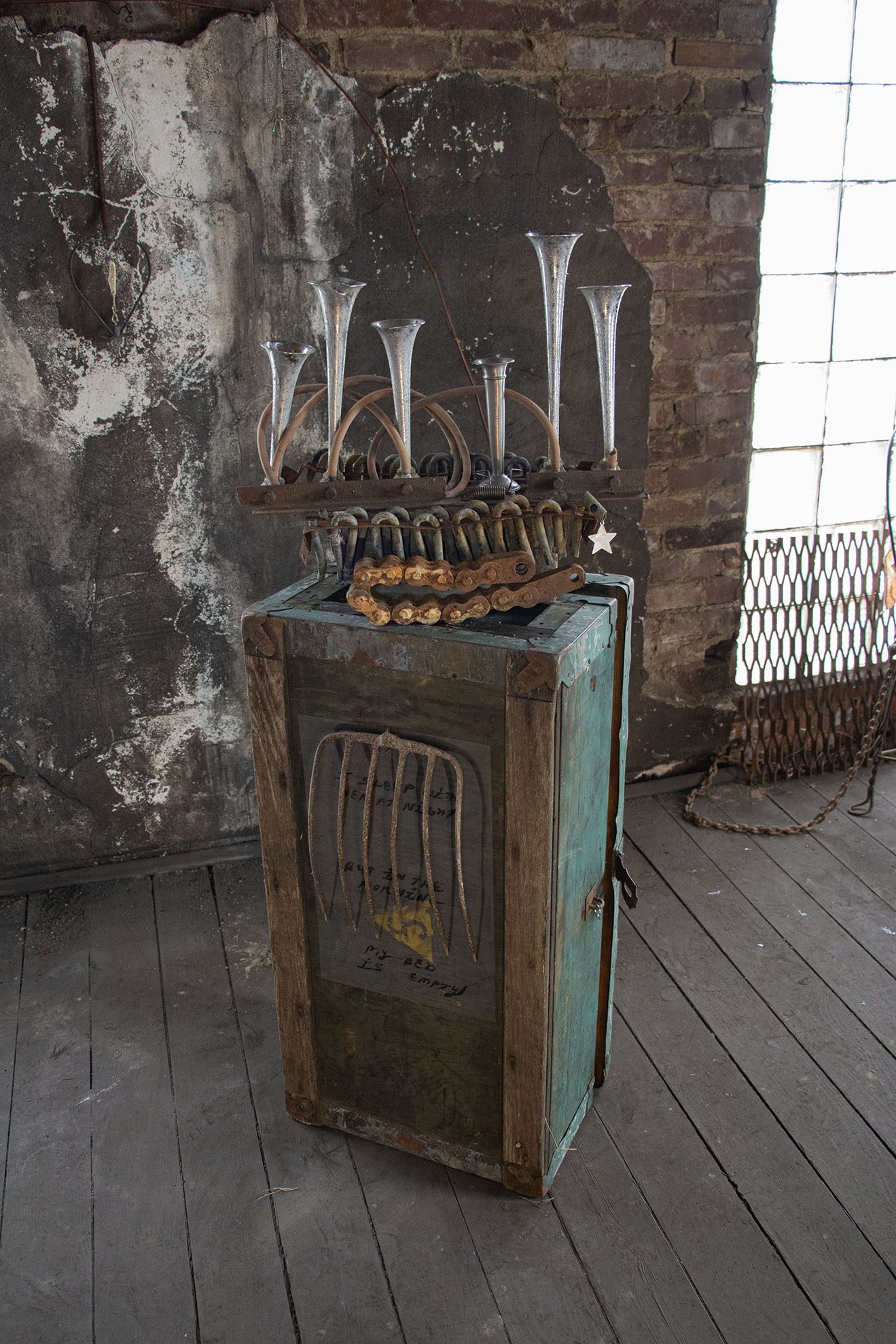
Alex Patrick Dyck, Thorn Apple, 2023, Found objects, mother of pearl, transparency film, sumi ink

Cléo Sjölander, transformation, 2023, found metal flower, car light, 27 x 18 x 9 in
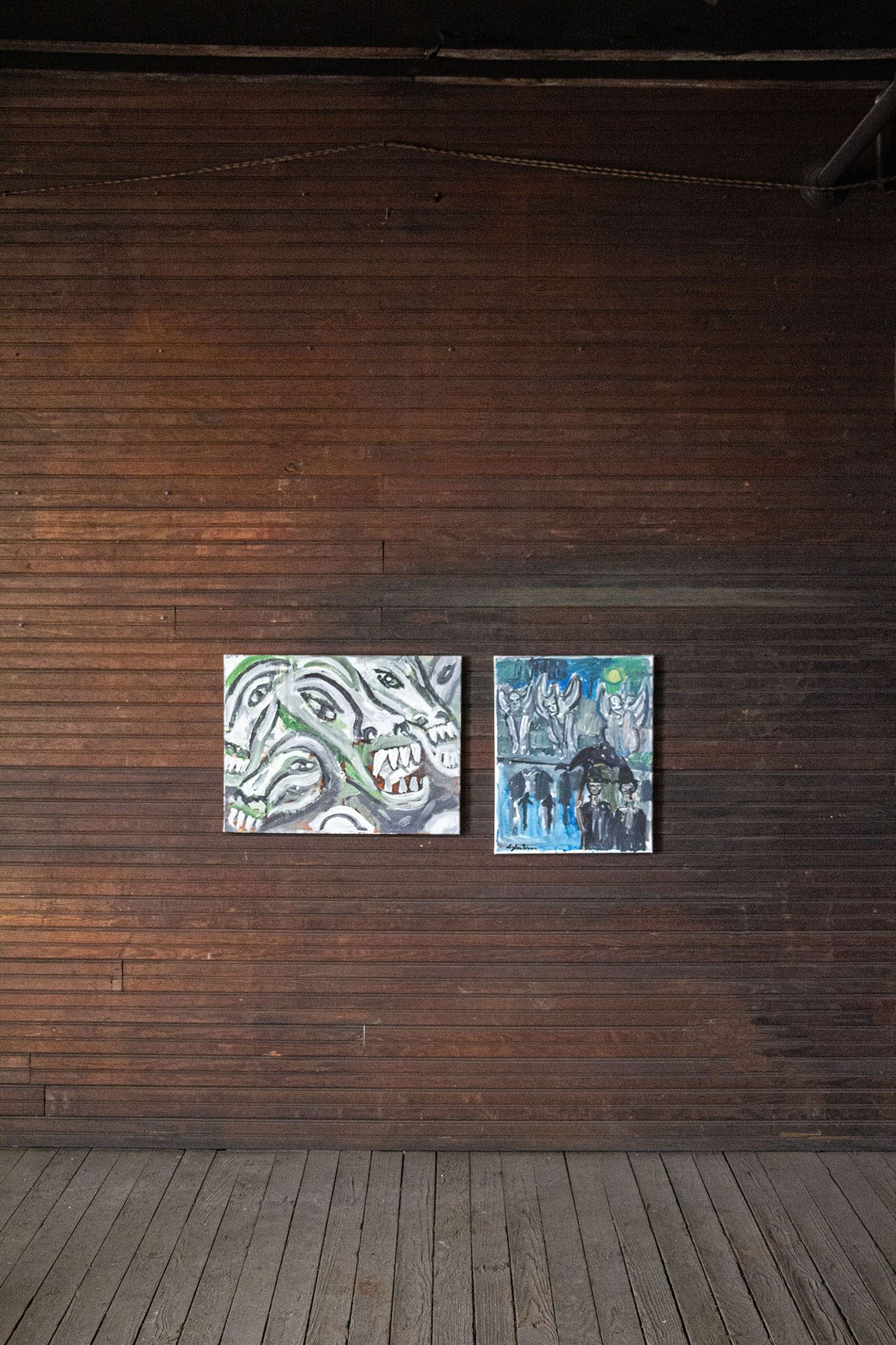
(left to right) Dylan Weaver, The Dragons, 2022-2023, acrylic on canvas Dylan Weaver, Gargoyles In Spain, 2023, acrylic on canvas
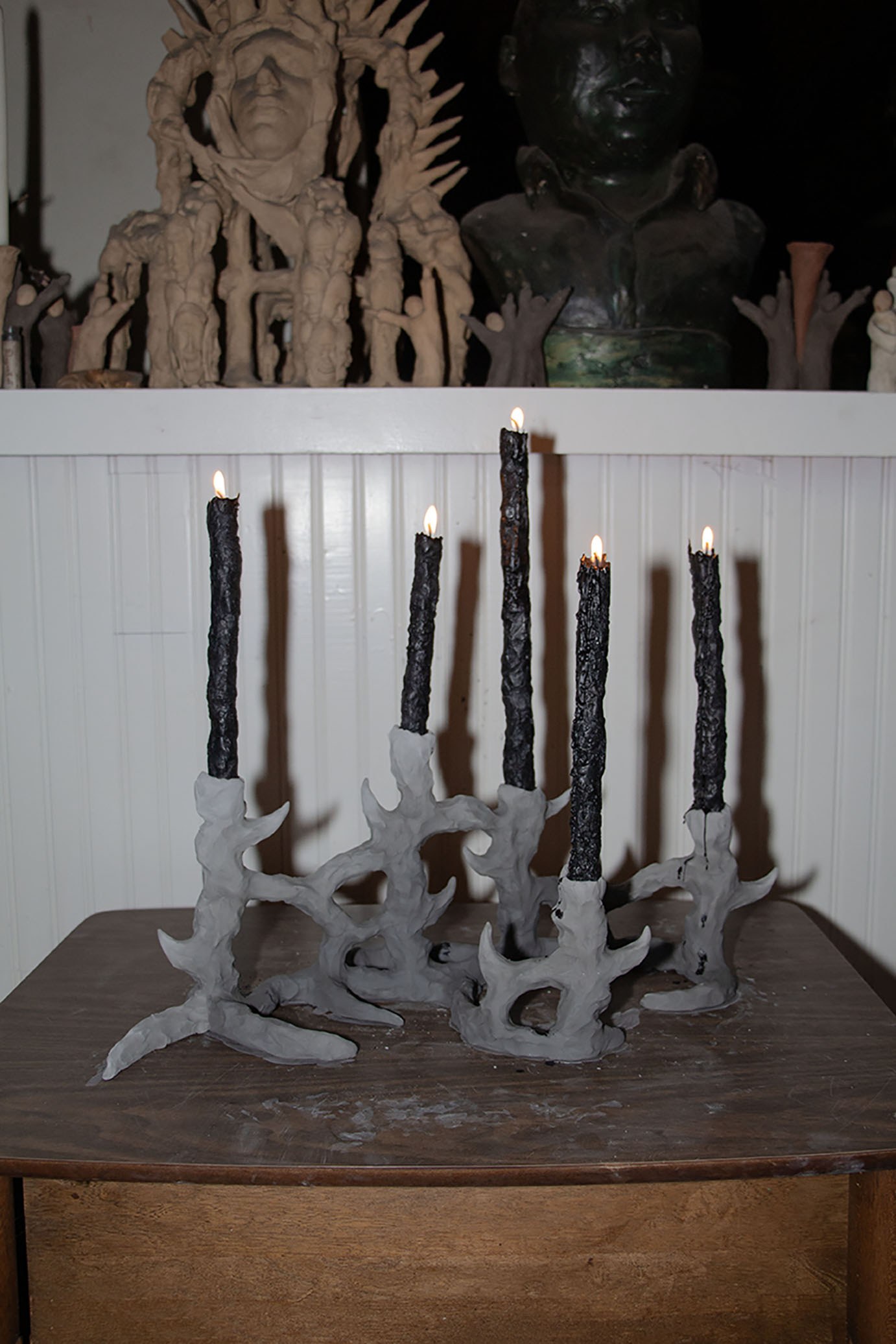
Cléo Sjölander, RIP Scott Pergande, 2023, raw clay, beeswax, 21x18x13 in
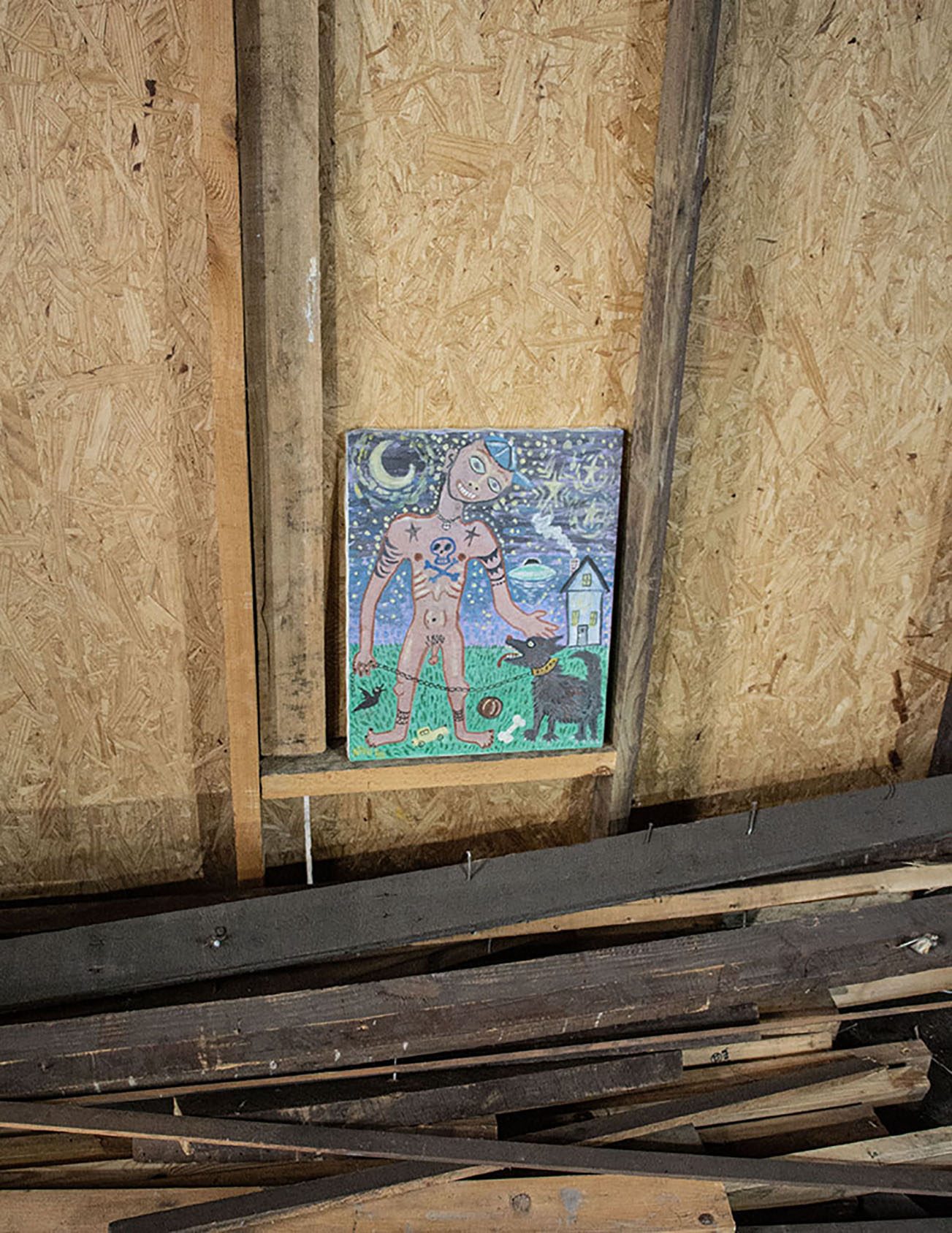
Jason Van Hoose, Black Dog, 1996, acrylic on canvas
“But these moments, like the deeply rhythmic movements of poetry, of music, of love, of dance, have the power to capture and endlessly recapture the moment that counts, the moment of rupture, of fissure.”
(Bataille, 1993, p. 203)
“Laughter is a communion with the dead, since death is not the object of laughter: it is death itself that finds a voice when we laugh. Laughter is that which is lost to discourse, the haemorrhag- ing of pragmatics into excitation and filth.”
(Land, 1992, p. xvi)
“Traumatism as an opening to the future of the wound is the promise of a text.”
(Cixous, 1998, p13)
In medical terms, we speak of dehiscence when there is a partial or complete reopening of a wound’s edges due to improper healing. dehiscence can occur internally or externally and can be caused by multiple factors such as inadequate aseptic techniques, inadequate undermining of the wound, infection, smoking, a strain or heavy lifting.
In botany, dehiscence describes the spontaneous opening at maturity of a plant’s anther to release its content. The shattering of pod shells frees pollen and seeds, assuring the reproduction of the plant. When the datura’s pod cracks open, it reveals dark bluish seeds around a central kernel. It opens in a way that would be impossible to suture back, agape so wide it would remind you of butterfly wings or a blooming onion.
There are things one keeps returning back to, rewriting - unwillingly they resurface. There are wounds that do not heal, chronic wounds. They do not follow the habitual stages of healing, and either reopen or remain painfully swollen for months on end. If in a way they resist scaring, it is also that they resist time.
I revisit a book I thought I was familiar with but instead, in it, find an entirely new beginning. One of us slices open his shin, close to the ankle, a wound too deep not to suture. In the book, Cixous writes of writing as conjuring - maintaining and reanimating traces. One of the central stories deconstructed in Stigmata, is a childhood memory of being bit by her dog. A bite that occurred shortly after the passing of her father and that left a unique scar on her foot. Her scar: an awful treasure, a proof, a testimony, a transfiguration. The shin-wound reopened, twice. As if attempting to halt time, but instead confirming the probability of a scar, the indelible confirmation of our time spent there. Stigma from stigmè: the point, the spike or the punctuality of the instant, an incessant sting.
Again, in botany, stigma a part of the pistil, where the male pollen germinates. “In its cavity resurrection is hatched. What is dead and what will live share the same bed. Tomb-cradle: another definition of Stigma.” (Cixous, 13)
The datura is both frightening and alluring. It has been used for its medicinal properties in the 17 and 1800s, for soothing pain topically, or as a sleeping aid. In the indigenous communities of Asia and South America, it has been used to heal anxieties, as well as in specific shamanistic rituals or rites of passage. The Datura is deadly. Accounts of hallucinations caused by the plant seem to have similar throughlines - black dogs, being one of them. Visions are said to linger way past the time of intoxication: apparitions of silhouettes or faces lurk in the back of one's eyes for months before permanently fading away. The flower’s parapsychological properties are believed to be occultist. The datura will command respect and make its power known. To assuage its fury one should either provide an act of service towards the plant or partake in an act of sacrifice.
I do not know for certain what each of us traded for the plant, some heard her commanding voice, others didn’t mention as much. One thing is for sure many a drink was spilled over in her honor, libations poured back into the earth between emptied bullet shells, rocks, broken glass and wet paper. I have always been seduced by the idea that the dead receive the wine poured into the ground –that it somehow carries through.
It occurs to me that I should look into the geology of the place: Youngstown. And the history of its name. A name which in itself implies some sort of time suspended. What if there was some sort of gravitational pull that could explain the coincidences, the openings, the revelations we all felt simultaneously during our time there.
If you’d ask any one of us, why the flower - we’d tell you she seemed to have picked us first.
Datura is a group exhibition presenting works by Justin Apperley, Julien Parant-Marquis, éli del, and Cléo Sjölander, Alex Patrick Dyck, Tom Roeshlein, Dylan Weaver, Paul Burgess and Jason Van Hoose at 100 N Prospect in Youngstown, Ohio. The exhibition, curated by Marie Ségolène is the culmination of a 10 day artist residency, coordinated with Rocco Sait, in which the artists worked individually and collaboratively on over 50 artworks. The final exhibition took place for one evening and will be traveling to Montreal in January.
Marie Ségolène C Brault


